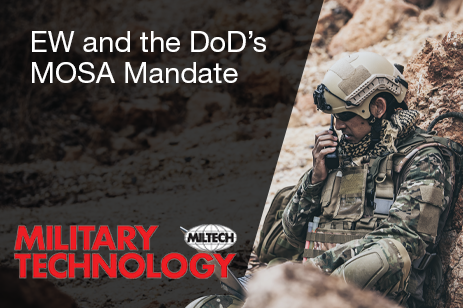
Published in MILITARY TECHNOLOGY (MILTECH)
Written by Denis Smetana
Electronic Warfare (EW) system designers must constantly respond to new threats and come up with appropriate ways to respond. EW is a continuously evolving domain, for which the concept of QRC [quick response capabilities] is vital to introducing new capacities rapidly and easily. These capabilities can range from those that correctly identify new threats to new techniques that nullify a threat.
Techniques may involve jamming the incoming signal or distorting/delaying the natural response, to confuse whatever weapons may be zeroed in on the target platform.
One of the main differences between radar and EW system architectures is that radar systems are primarily receivers of sensor data. While some radar systems may transmit energy to excite the targets, other radar systems may be completely passive. EW sense-and-response systems, on the other hand, have significantly more bidirectional activity compared to a radar system. Moreover, EW systems must respond after sensing a signal as close to instantaneously as possible. That capability means that low latency is essential to enable signals to get in and out of the system as quickly as possible.
Rapidly responding to new threats, in real-time, in the current dynamic environment, is one of the primary drivers behind the US DoD’s mandate to adopt a Modular Open Systems Approach (MOSA) for procurement across the Army, Air Force, and Navy. The MOSA mandate drives a modular approach to system design that lowers the cost of integration and speeds the deployment of new capabilities to address emerging threats.
Read the full article (Page 52).